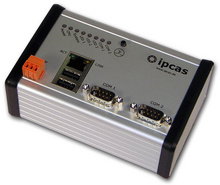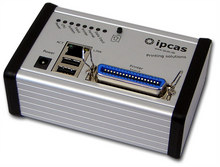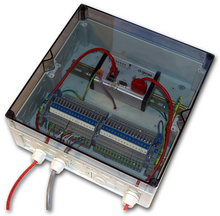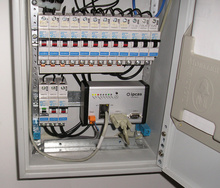“Printing converters” run embedded Linux
Mar 14, 2008 — by LinuxDevices Staff — from the LinuxDevices Archive — 145 views An industrial computing specialist in Erlangen, Germany has used Linux and a low-powered system-on-chip to build two legacy port servers. Ipcas's “RS232-to-USB” and “Centronics-to-USB” servers let users connect modern USB printers, memory sticks, and Ethernet networks to legacy interfaces on factory and… automation equipment.
An industrial computing specialist in Erlangen, Germany has used Linux and a low-powered system-on-chip to build two legacy port servers. Ipcas's “RS232-to-USB” and “Centronics-to-USB” servers let users connect modern USB printers, memory sticks, and Ethernet networks to legacy interfaces on factory and… automation equipment.
Ipcas says its legacy port servers require no additional device drivers or other modifications to the host equipment. The primary intended customers are those finding it difficult to buy or maintain log printers with serial and/or parallel interfaces.

Typical use with an Arburg injection molder
(Click to enlarge)
Both legacy port servers are based on Ipcas's “Linux Box LB1” hardware design, a compact, cool-running DIN-rail mountable industrial PC available with 9-volt or a wide-range 24-volt power supply. The LB1 is available separately, with complete cross-development toolchains and lots of documentation.


A 24-volt LB1 (l) and 9-volt C-to-U
(Click either to enlarge)
The LB1 (and hence the legacy port servers) are based on an Axis Etrax 100LX, a 32-bit RISC CPU clocked at 100MHz. One of the first system-on-chip (SoC) processors to support Linux, the 100LX debuted in Nov. of 2000, shortly after the arrival of its MMU-less forebear, the original Etrax 100. Axis itself has used the 100LX in similar “device servers,” such as the Linux-based Axis 83.
The LB1 comes standard with 64MB of SDRAM and 8MB of Flash. For spooling large printer runs, flash is upgradable with an optional CompactFlash slot. Alternatively, logs can be written to USB-based flash storage, Ipcas suggests.
The LB1's I/O interfaces include:
- Either a pair of RS232 ports, or a single Centronics (parallel printer) port
- 2 x USB 1.1 host ports
- 1 x 100Mbit Ethernet
The LB1 also offers a programmable push-button, 10 status LEDs, and a battery buffered real-time clock rated at ± 60 sec time divergence per year when run between zero and 40 deg. Celsius. It measures 5 x 3.2 x 1.8 inches (126 x 81 x 45mm), and has a sturdy aluminum case that can be mounted to DIN rails.


The LB1 in an IP54 case (l) and breaker box
(Click to enlarge)
The LB1 draws under 1.5 Watts in operation, and 1.2 Watts in standby, Ipcas said. This lets it run cool enough for use in enclosures sealed to IP54 (ingress protection 54) specifications, as shown above.
The LB1 comes preinstalled with Linux, along with web, ssh, ftp, and telnet servers. There's also an SDK (software development kit) based on a GNU C cross-compiler for the 100LX's RISC-based CRIS processor architecture. Ipcas provides instructions for using the kit on a variety of Linux distributions, as well as on Windows hosts running Linux in a VMWare virtual machine.
Availability
The basic LB1 is available now, priced at 300 Euros (~$470). The “Centronics to USB” and “RS232 to USB” variants fetch 400 Euros (~$626).
This article was originally published on LinuxDevices.com and has been donated to the open source community by QuinStreet Inc. Please visit LinuxToday.com for up-to-date news and articles about Linux and open source.